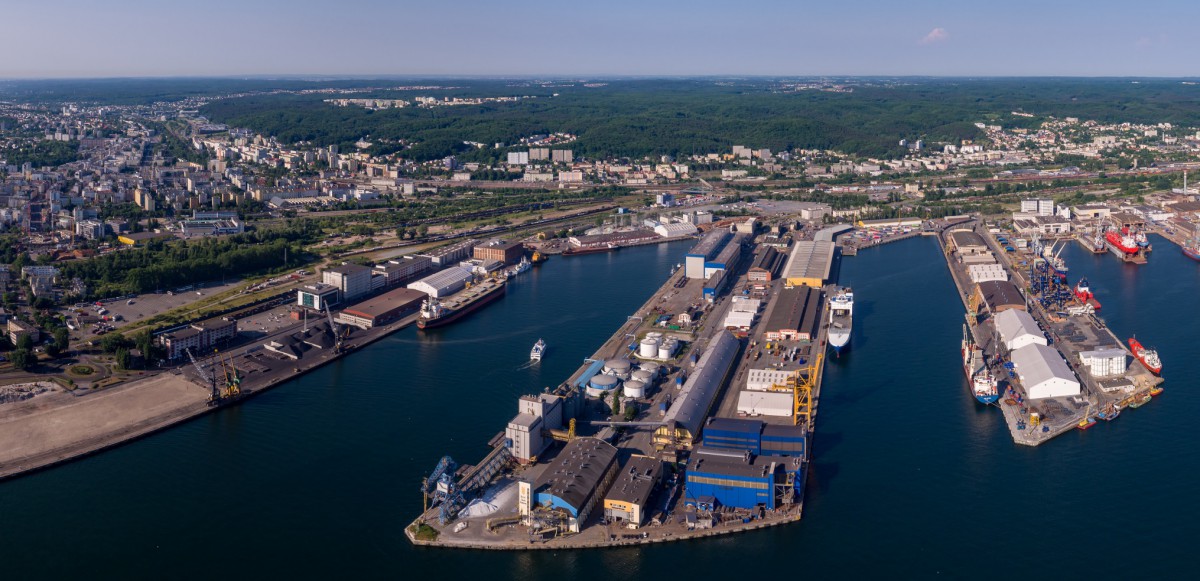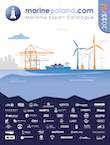
The OT Port Gdynia terminal has been providing transhipment and storage services in eastern part of the Gdynia Port for 25 years, within two port basins - Basin IV and Basin V. These areas, formerly called Districts I and II, have been specialized in handling all kinds of general cargo from the very beginning of the establishment of Gdynia port. The port was created together with the city, and the city together with the port. The most significant figure who contributed to accelerating the developement of Gdynia was Eugeniusz Kwiatkowski. In his concept, Gdynia had a very important place. Experienced economist ephasised: "Without a free exit to the sea and across the sea we would suffocate economically and politically". Kwiatkowski took the case of Gdynia in his own hands and "opened the window to the world", thanks to wich the contstruction of the port starter smoothly. The Basin V of Gdynia port was named in his honor.
The history of the areas, where to this day terminal OT Port Gdynia is thriving, can be a can be an interesting thing for many. The embankment of Basin IV and V are located on terrains that was formerly known as "Grabówek". It used to be an estate situated in the valley of Chylonka River, north of the village Gdynia. The old name of this place: Grablewo or Grabowo, came from the hornbeam forest located here. The property, which belonged to an old pomeranian noble family - Tempscy, was named Grabow. After Rzeczpospolita regeined its independence, the Tempski heir annouced, that whoever of his peasants or workers would came up with a new name, would receive a price. As the story goes, one of the farmstead workers, who had a bone to pick with the hair for a long time, had written on a card: „Grabieżco, Rabuśniku, Awanturniku, Bandyto, Obwiesiu, Wandalu, Elegancie, Kanalio…” ("You marauder, robber, bandit, stinker, vandal, dandy, scoundrel"). Mr. Tempski have read this and then created a word from every first letter. This is how the name "Grabowek" was created. When the contruction of the port started and the city was growing, Tempski heir sold the property and moved to Poznań, and the Maritime School took the place of the old manor house.
The act on expropriation of the land for the construction of the port was promulgated in 1921, however the actual expropriation haven't began until four years later. The areas of the future Basins V and IV were covered with meadows with overgrowing peat bogs. A dirt road ran to Oksywie ran there, repeatedly flooded with waves from the bay, during winds from the east. Engineer Wenda used to stroll through these meadows and peatlands, already creating a future outline of the port basins. The concept of buinlding a Rzeczpospolita seaport in the Chylonka valley then competed with a concept of constructing a port in Tczew, that was supported by the marshal of Tczew. The chpice of Gdynia was finally sealed by the french general opinion, Ryanal, who was then the director of the Dakar port. As an expert, he recognized Gdynia as the most accurate place for a future port. Therefore, a great construction began, lasting several years.
The port traffic on the waterfronts of Basins IV and V only started in the 1930s. As the port was growing, the transshipments also increased. Companies specialized in handling a variety of cargo were then established. Permanent carters, specialist port workers and crane operators were employed. They knew the port best and experience with cargo equipment. The rest of the crew came from so called "stock exchange" where the foremen could freely choose workers. Crowds of young people dreaming of working in the port were coming to Gdynia from all over Rzeczpospolita. In 1935 the port already had all of the important embankments and basins. The depth (6-12 m) allowed all of the biggest ships to dock at that time. The biggest pride was a massive port cold store building at the Polish Quay (Basin IV), which was the second largest object of this type in the world. The cold store had depots for the simultaneous storage of cargo from 1200 carriages.The "Union" Oil Mill and Cotton Warehouse were also built on the Romanian waterfront. Near the area that today is used by OT Port Gdynia, in 1938, there was built a grain elevator, which could house up to 10 000 tons of grain at a time, and a Rice Hothouse with milling capacity of up to 150 000 tons, a Pultry Slaughterhouse and Tobacco Warehouse. At the Polish Quay, next to state warehouses, there were wherehouses belonging to the companies: F.J. Fetter and Cukroport, as well as the Post Office and Harbor Master's Office.
From the beginning of the establishment of the Gdynia port, Region I and II was specialized in handling all kinds of general cargo. As a result of privatization processes of the Port of Gdynia Authority on August 1, 1995, a commercial law company was established under the name BTDG - Bałtycki Terminal Drobnicowy Gdynia Sp. z o.o. It took over the port activities of Basins IV and V, i.e. the former Districts I and II of the port of Gdynia. In August 2001, after three years of planning and construction, in the former general cargo Basin V, as part of the activities of the Baltic General Cargo Terminal Gdynia Sp. z o.o., a new specialized and dedicated ro-ro terminal was created. In consultation with customers handling ro-ro cargo at the Port of Gdynia, at the turn of July and August 2001, all traffic of these cargoes was moved from Gdynia container terminal to the Baltic General Cargo Terminal Gdynia. Later, in addition to further investments in technological ro-ro, lo-lo and sto-ro
potential, a number of investements were made to adapt the terminal for transhipment and storage of dry bulk cargo. In december 2010 the Baltic General Cargo Terminal Gdynia started transhipment of dry bulk cargoes, such as feed, cereals, coal, coke and biomass. And so it became the most universal transhipment terminal in the port of Gdynia, handling both general and bulk cargo, in several technologies. On July 1, 2014, OT Logistics S.A. acquired 100% of shares in Baltic General Cargo Terminal Gdynia Sp. z o.o. from the Management of Gdynia Seaport S.A., thereby including the terminal in the group of OT Logistics Capital Group companies. In June 2015, there was a change of name from the Baltic General Cargo Terminal Gdynia Sp. z o.o. to OT Port Gdynia Sp. z o.o..
Today, OT Port Gdynia operates based on port quays located around two port basins, the abovementioned Basin V Kwiatkowski and Basin IV named after Pilsudski. The terminal has at its disposal almost 4 km of quays: Romanian, Czech and United States (in Pool V) as well as Rotterdam and Polish (in Pool IV), and part of Hungarian, located in Pool VI, where warehouses and storage yards are located. Looking at the modern face of the wharfs of Basins IV and V, it is worth remembering the times of their creation. The time when the port and city were created from the sea and dreams - "the window of the Second Polish Republic to the world"


